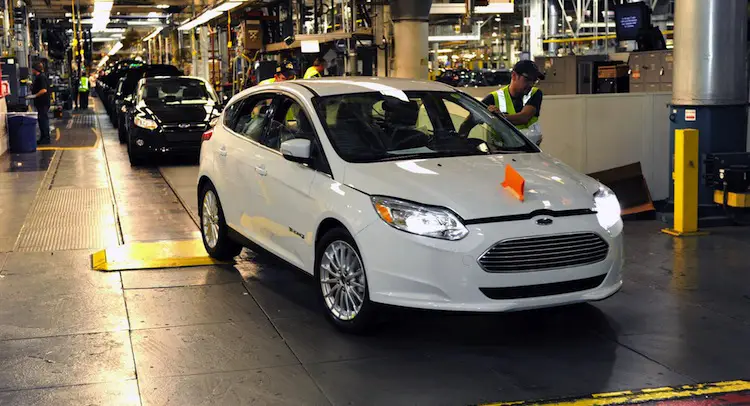Is Ford Moving Out of Mexico? The Truth Behind the Rumors
Rumors have swirled about Ford Motor Company potentially relocating its manufacturing operations from Mexico, raising questions among Ford enthusiasts, buyers, and DIY mechanics. However, recent evidence and official statements confirm that Ford is not moving out of Mexico. Instead, the company is deepening its commitment to the region with significant investments, particularly in electric vehicle (EV) production. This article explores the origins of these rumors, Ford’s current operations in Mexico, recent expansions, the impact of trade policies, and what this means for Ford owners and buyers.
Understanding the Rumors: Why People Think Ford is Moving Out of Mexico
Historical Context
The idea that Ford might be moving out of Mexico likely originated from events in 2016-2017, when Ford announced plans to shift production of small cars, like the Ford Focus and C-Max, from the U.S. to Mexico to reduce costs. This decision drew significant attention, particularly from then-presidential candidate Donald Trump, who criticized Ford and threatened tariffs on vehicles imported from Mexico. In response, Ford canceled a planned $1.6 billion factory in San Luis Potosi, Mexico, in 2017 and redirected $700 million to its Michigan plant. However, small-car production still moved to an existing facility in Hermosillo, Mexico, which some misinterpreted as a complete withdrawal.
Recent Misinformation
In 2025, a satirical website falsely claimed that Ford was relocating four factories and 25,000 jobs back to the U.S., citing a fabricated quote from a “Ford spokesperson.” This story spread rapidly on social media but was quickly debunked by Ford’s official spokesperson, Dan Barbossa, who stated, “We have 24 plants in the U.S., employ the most U.S. hourly employees, produce the most vehicles in America, and are America’s largest vehicle exporter.” No plans to shift production from Mexico were announced, highlighting the importance of verifying information from credible sources.
For more on how misinformation can affect perceptions, explore our article on Ford’s global manufacturing strategy.
Ford’s Current Operations in Mexico
Ford has a robust manufacturing presence in Mexico, with several facilities producing vehicles and components critical to its global operations. These plants employ thousands of workers and leverage Mexico’s skilled workforce and favorable trade agreements. Below are Ford’s key operations in Mexico:
- Ford Chihuahua Engine Plant:
- Location: Chihuahua, Mexico
- Production: Manufactures the 6.7L Power Stroke V8 engine for Ford Super Duty trucks.
- Significance: Supports Ford’s heavy-duty truck lineup, essential for industries like construction and agriculture.
- Ford Cuautitlan Plant:
- Location: Cuautitlan, just outside Mexico City
- Production: Builds the Ford Mustang Mach-E, Ford’s all-electric SUV.
- Significance: A cornerstone of Ford’s electrification strategy, with vehicles exported to over 40 countries.
- Ford Hermosillo Assembly Plant:
- Location: Hermosillo, Mexico
- Production: Assembles the Ford Bronco Sport and Ford Maverick, a compact pickup truck.
- Significance: Produces popular models for both U.S. and international markets.
These facilities underscore Ford’s reliance on Mexico for cost-effective production and access to global markets. To learn more about these vehicles, check out our guides on the Ford Maverick, Ford Bronco Sport, and Ford Mustang Mach-E.
| Plant | Location | Production | Key Models/Components |
| Chihuahua Engine Plant | Chihuahua, Mexico | 6.7L Power Stroke V8 engine | Ford Super Duty |
| Cuautitlan Plant | Cuautitlan, Mexico | Ford Mustang Mach-E | Electric SUV |
| Hermosillo Assembly Plant | Hermosillo, Mexico | Ford Bronco Sport, Ford Maverick | Compact SUV, compact pickup |
Recent Investments and Expansions in Mexico
Rather than moving out, Ford is actively expanding its operations in Mexico, particularly in the EV sector. In August 2024, Ford announced a $273 million investment in its Irapuato plant, transforming it into the Irapuato Electric Powertrain Center. This facility, previously focused on transmissions for gasoline-powered vehicles, now produces primary drive units (electric motors and transaxles) for the Mustang Mach-E. This investment supports 700 jobs and aligns with Ford’s global push toward electrification.
Mexican officials, including Economy Minister Marcelo Ebrard, have emphasized that Ford has no plans to cease production in Mexico. This commitment is further evidenced by Ford’s continued production of key models like the Maverick and Bronco Sport at the Hermosillo plant. Other automakers, such as BMW, are also investing in Mexico for EV production, indicating the region’s growing importance in the automotive industry’s shift to sustainable vehicles.
For more on Ford’s electrification efforts, visit Ford’s official website.
The Impact of Tariffs and Trade Policies
Potential Tariffs
Trade policies, particularly tariffs, have been a focal point for automakers operating in Mexico. In 2025, the U.S. implemented a 25% tariff on vehicles imported from Mexico, which could increase the cost of models like the Ford Maverick, Bronco Sport, and Mustang Mach-E. These tariffs are part of broader trade discussions, with the U.S.-Mexico-Canada Agreement (USMCA) scheduled for review in 2026. The USMCA currently allows duty-free vehicle imports, but new tariffs could disrupt this arrangement.
Ford’s Response
Ford has taken proactive steps to mitigate the impact of tariffs:
- Lobbying Efforts: Ford is advocating for exemptions on lower-cost components to reduce the financial burden of tariffs.
- Pricing Strategies: In 2025, Ford launched an employee pricing plan for U.S. customers, offering discounts to offset potential price increases due to tariffs.
- Operational Continuity: Despite tariff concerns, Ford has reaffirmed its commitment to maintaining production in Mexico.
For a deeper understanding of how tariffs affect Ford owners, read our article on Understanding Tariffs and Their Impact on the Automotive Industry.
Ford’s Future Plans in Mexico
Ford’s long-term strategy in Mexico is focused on growth, not retreat. The company is leveraging Mexico’s strategic advantages—such as its skilled workforce, proximity to the U.S., and extensive trade agreements—to expand its manufacturing capabilities. The $273 million investment in the Irapuato plant for EV drive units is a clear indicator of Ford’s commitment to producing next-generation vehicles in Mexico.
As Ford accelerates its transition to electrification, its Mexican facilities will play a pivotal role in producing components and vehicles for global markets. Models like the Mustang Mach-E, which saw a 3.3% sales increase in the U.S. in 2023 (40,771 units) and continued growth in 2024 (26,826 units from January to July), highlight the importance of Mexico’s production capacity.
For Ford owners and buyers, this means continued access to high-quality, cost-effective vehicles. To ensure your Ford remains in top condition, use our VIN check tool to stay updated on recalls and maintenance needs. Additionally, explore our guide on Ford’s factory warranty for details on coverage.
Frequently Asked Questions (FAQ)
1. Is Ford moving its production from Mexico to the U.S.?
No, Ford has no plans to relocate its production from Mexico to the U.S. Recent rumors, including a 2025 satirical post, have been debunked by Ford’s official statements and Mexican officials.
2. What models does Ford produce in Mexico?
Ford produces several key models in Mexico, including:
- Ford Mustang Mach-E: Built at the Cuautitlan Plant.
- Ford Bronco Sport: Assembled at the Hermosillo Plant.
- Ford Maverick: Also produced at the Hermosillo Plant.
3. How are tariffs affecting Ford’s operations in Mexico?
The 2025 U.S. tariffs on imported vehicles could increase costs for models produced in Mexico. Ford is addressing this through lobbying for tariff exemptions and offering customer pricing plans to mitigate price hikes.
4. What is Ford’s long-term strategy for manufacturing in Mexico?
Ford is committed to expanding its operations in Mexico, particularly in EV production. The $273 million investment in the Irapuato plant for Mustang Mach-E drive units underscores Ford’s focus on leveraging Mexico for sustainable vehicle production.
Conclusion
The notion that Ford is moving out of Mexico is a misconception fueled by outdated news and misinformation. Ford remains deeply invested in Mexico, with key facilities producing vehicles like the Mustang Mach-E, Bronco Sport, and Maverick. Recent investments, such as the $273 million upgrade to the Irapuato plant, demonstrate Ford’s commitment to expanding its EV production in the region. While tariffs pose challenges, Ford is actively working to ensure affordability and quality for its customers.
Stay informed about your Ford’s maintenance and warranty status with our VIN check tool and explore trusted dealerships like Gary Yeomans Ford for expert service. For more insights into Ford’s global operations, visit FordMasterX.com.




